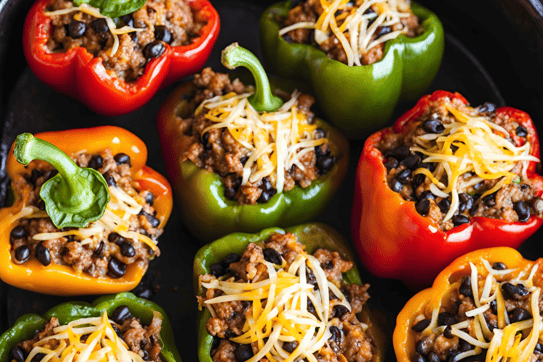10 Effective Tips to Increase Protein Intake for Weight Loss
Discover 10 actionable tips to boost your protein intake and supercharge your weight loss journey. Learn how protein supports fat loss, preserves muscle, and enhances satiety, with easy meal ideas and tracking tools to help you succeed!
HELPFUL TIPS
10/7/20243 min read


Understanding Protein and Its Role in Weight Loss
Protein is a macronutrient that plays a pivotal role in various biological functions within the human body. Composed of amino acids, protein serves as a building block for muscles, tissues, hormones, and enzymes. In the context of weight loss, protein is particularly beneficial for several reasons. One of the primary advantages of protein intake is its ability to preserve lean muscle mass while the body is in a calorie deficit. Maintaining muscle mass is crucial because it directly influences the resting metabolic rate, the number of calories the body burns at rest.
Besides aiding in muscle retention, protein is known to increase satiety, which can help in weight management. A diet high in protein can influence feelings of fullness more effectively than one enriched with carbohydrates or fats. Studies have shown that individuals who consume higher amounts of protein tend to feel satisfied with fewer calories, thereby reducing the likelihood of overeating. This satiating effect is partly attributed to protein’s impact on hunger hormones like ghrelin, which regulates appetite.
Moreover, protein has a higher thermic effect compared to fat and carbohydrates, meaning more energy is required for its digestion and absorption. This inherently boosts metabolism and can contribute to calorie expenditure throughout the day. The recommended daily protein intake for individuals aiming for weight loss typically falls between 1.6 to 2.2 grams of protein per kilogram of body weight. Research indicates that adhering to these guidelines can significantly enhance weight loss efforts while promoting metabolic health.
With the integration of protein-rich foods into one’s diet, not only does one stand to benefit from improved body composition, but the overall dietary quality is also enhanced. This makes protein an essential factor in any weight loss strategy tailored for long-term success.
Top Tips for Increasing Protein in Your Diet
Incorporating more protein into your diet can significantly enhance your weight loss journey. Employing a few simple strategies can help you achieve a higher protein intake effortlessly. One effective approach is to substitute low-protein foods with higher-quality protein sources. For example, opt for quinoa or farro instead of rice, or choose whole grain bread that contains added seeds and grains.
In addition to meal substitutions, introducing protein-rich snacks into your routine can be an excellent way to boost your daily intake. Choose snacks such as Greek yogurt, cottage cheese, or mixed nuts, which not only provide protein but also keep you satiated between meals. Incorporating a protein supplement can also be beneficial, particularly if you find it challenging to meet your protein goals through food alone. Protein powders, bars, or ready-to-drink shakes offer a convenient means to augment your intake.
Exploring diverse protein sources is another effective strategy. Incorporate legumes such as lentils, chickpeas, and black beans into salads, soups, or stews. Dairy products, including low-fat cheese and yogurt, are excellent for adding protein while also supplying beneficial calcium. Additionally, lean meats like chicken, turkey, and fish not only enhance your protein consumption but provide essential nutrients for overall health.
Meal prep can play a crucial role in consistently increasing protein intake. Designing a meal plan that emphasizes protein-rich ingredients will ensure you stay on track. For instance, consider preparing grilled chicken breast with quinoa and steamed broccoli, or a chickpea salad loaded with colorful vegetables. By integrating these tips into your daily regimen, you can easily elevate your protein consumption, aiding in weight loss while promoting better overall health.
Resources and Tools to Track Protein Intake
Tracking protein intake is a pivotal aspect of managing one’s diet, especially during weight loss journeys. Several tools and resources have emerged to assist individuals in this endeavor. Mobile applications such as MyFitnessPal and Cronometer allow users to log their food consumption easily, providing detailed breakdowns of macronutrients, including protein. These apps not only help track daily intake but also facilitate meal planning by generating insights into the nutritional content of various foods.
In addition to mobile apps, a variety of websites offer valuable resources for tracking protein intake. Sites such as NutritionData.com provide comprehensive nutritional profiles for numerous food items, making it easier to review the protein content before consumption. Online databases can also serve as handy reference points, allowing users to compare different products or meals to make more informed dietary choices.
For individuals preferring a traditional approach, maintaining a food diary can be an effective method for monitoring protein consumption. Writing down what you eat can promote mindfulness around food choices and highlight dietary patterns and areas that may need work. Food labels are also important. Knowing how to read nutrition labels helps you identify the protein content in packaged foods, encouraging healthier selections and helping avoid foods low in protein.
Lastly, cookbooks and websites that focus on high-protein recipes are also excellent resources. By exploring diverse recipes that emphasize protein-rich ingredients, you can enjoy meals that contribute to your weight loss goals while keeping your diet varied and delicious!
Ready to try some delicious high protein recipes? Check them out!


Easy Healthy Recipes for Busy Cooks
Connect
© 2025 All rights reserved.


